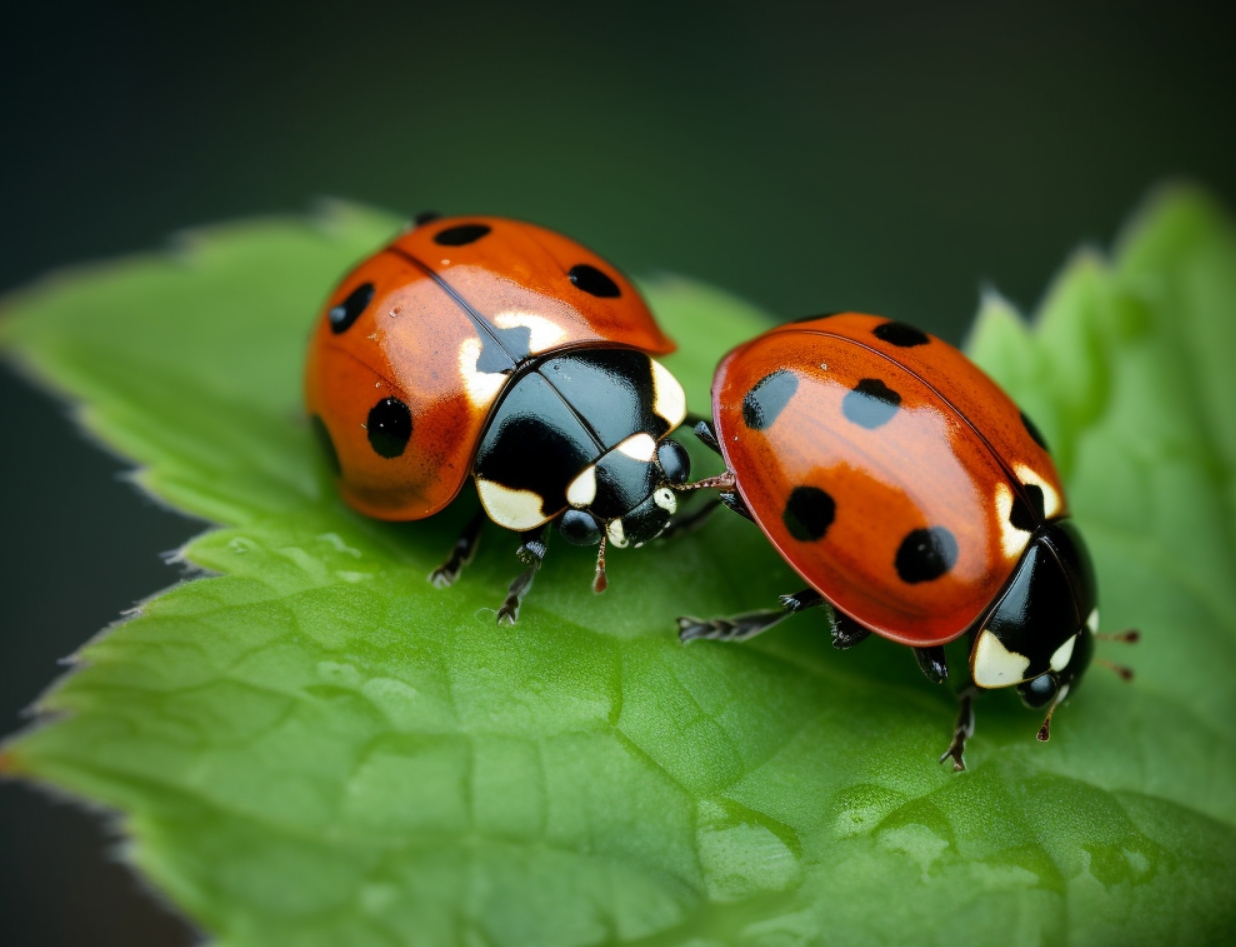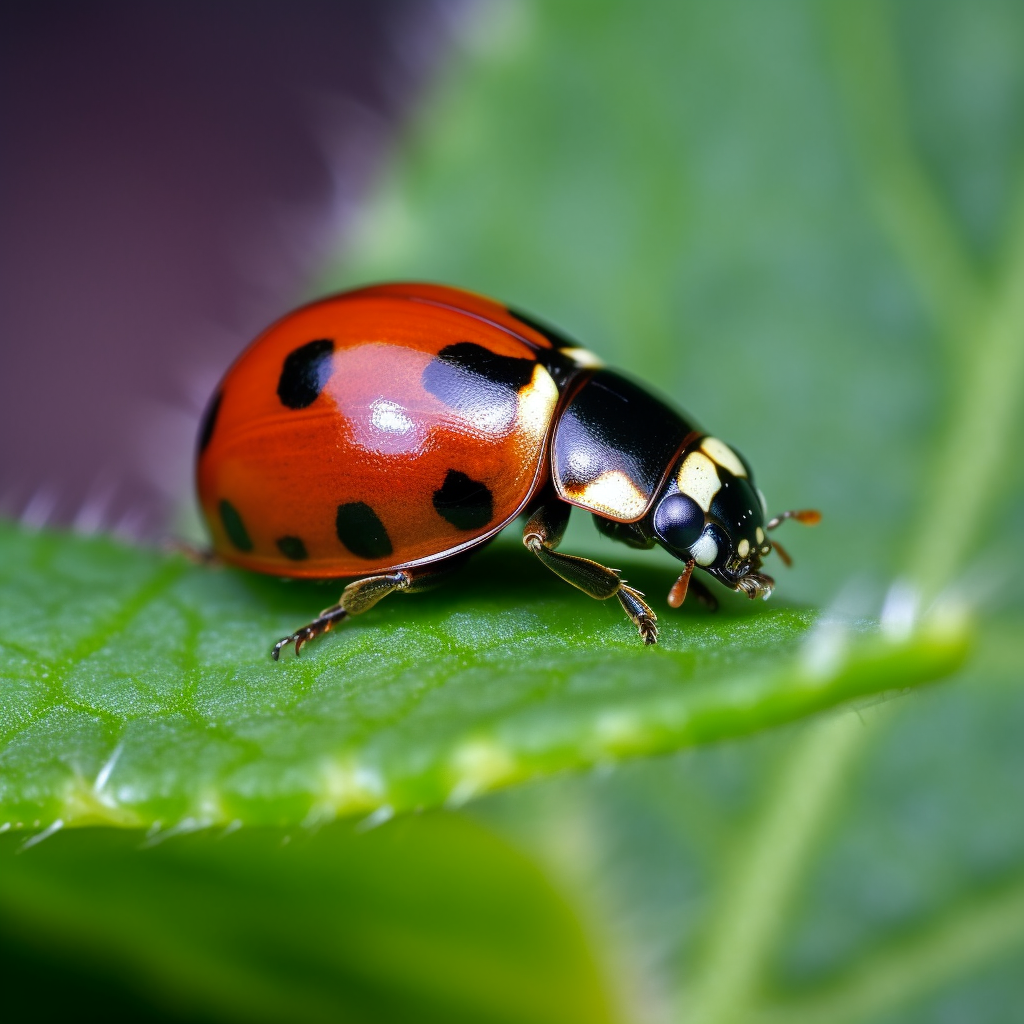Ladybugs, also known as ladybirds or lady beetles, are fascinating creatures that capture the hearts and imaginations of people all around the world. With their striking colors and adorable appearance, it’s no wonder they’re considered a symbol of good luck. In this comprehensive article, we’ll dive deep into the world of ladybugs, exploring fun facts that will surprise and delight you. So, buckle up and get ready to learn about these incredible insects!
1. Ladybugs are natural pest controllers
Contents
Did you know that ladybugs are a gardener’s best friend? These tiny insects are voracious predators of plant pests like aphids, mealybugs, and spider mites. One ladybug can eat up to 5,000 aphids in its lifetime! By munching on these destructive pests, ladybugs help protect our gardens, crops, and ecosystems. So, the next time you spot a ladybug in your garden, remember that it’s hard at work keeping your plants healthy.
Check out Do Ladybugs Eat Ants? to learn more about their predatory prowess.
2. Ladybugs come in a variety of colors and patterns
While most people associate ladybugs with their iconic red shells and black spots, these insects actually come in a wide range of colors and patterns. Some species are orange, yellow, or even black with red or yellow spots. In total, there are over 5,000 different species of ladybugs worldwide!
3. Ladybugs are masters of defense
When faced with danger, ladybugs employ a variety of defense mechanisms to deter predators. One such method is called “reflex bleeding,” where the ladybug releases a foul-smelling, toxic fluid from its joints. This fluid, which comes from their hemolymph (insect blood), not only tastes terrible but can also cause temporary paralysis in some predators.
Learn more about their defense mechanisms at How Do Ladybugs Protect Themselves?
4. Ladybugs undergo an incredible transformation
Like butterflies, ladybugs go through a complete metamorphosis, transforming from a tiny egg to a crawling larva, a pupa, and finally, an adult ladybug. This process takes about three to four weeks, depending on the temperature and food availability.
5. Not all ladybugs are harmless
While most ladybugs are harmless to humans and beneficial to the environment, there is one species that you should watch out for – the Asian lady beetle (Harmonia axyridis). This invasive species, introduced to control aphids, can bite humans and release a smelly yellow liquid when threatened. Their bites aren’t dangerous, but they can be annoying.
Find out more about Asian lady beetles at Do Asian Lady Beetles Bite?
6. Ladybugs hibernate during winter
When the cold weather sets in, ladybugs seek shelter to hibernate. They gather in large groups, sometimes numbering in the thousands, and find a warm, cozy spot to wait out the winter months. You might find them tucked away in leaf litter, under logs, or even in the cracks of your home.
7. Ladybugs use their spots for more than just decoration
Those distinctive spots on a ladybug’s back have a purpose beyond making them look adorable. The spots serve as a warning to predators, signaling that the ladybug might not be a tasty meal. Bright colors and patterns in the animal kingdom often indicate that a creature is toxic or unpalatable, and ladybugs are no exception.
8. Ladybugs can fly at impressive speeds
You might not think of ladybugs as agile flyers, but they can actually reach speeds of up to 15 miles per hour! Their wings, which are hidden beneath their hard shells, beat about 85 times per second when in flight. Ladybugs use their flying abilities to travel between food sources and find mates, covering impressive distances in the process.
9. Ladybugs have been used as symbols throughout history
Ladybugs have long been associated with good luck and prosperity, and they’ve made appearances in various cultures’ folklore and mythology. In ancient European cultures, ladybugs were seen as a sign of good weather and bountiful harvests. In modern times, they continue to be popular symbols for luck, love, and happiness.
10. There are male and female ladybugs
It’s a common misconception that all ladybugs are female, but in reality, there are both male and female ladybugs. The primary difference between the two is size, with females typically being larger than males. Mating season for ladybugs usually occurs in the spring, and after mating, the female will lay her eggs on plants infested with aphids, ensuring that her offspring have a ready food source when they hatch.
11. Ladybugs have inspired many products and brands
The universal appeal of ladybugs has led to their inclusion in various products and brand names. From children’s toys to gardening products, ladybugs are a popular choice for companies looking to evoke feelings of positivity, luck, and nature. These brands often incorporate the bright colors and patterns of ladybugs into their designs and marketing materials, making them instantly recognizable and appealing to consumers.
12. Ladybugs practice cannibalism
While it may be a bit unsettling, ladybugs are known to practice cannibalism. When food sources like aphids are scarce, ladybugs will resort to eating each other, usually targeting eggs, larvae, and pupae. This behavior helps ensure their survival in times of food scarcity, as they can continue to grow and reproduce.
13. Some ladybugs are attracted to light
Certain species of ladybugs, particularly the invasive Asian lady beetle, are attracted to light. This is why you may find them congregating around windows or porch lights during the night. While this behavior can be a nuisance for homeowners, it’s important to remember that ladybugs are generally beneficial insects that play an essential role in controlling pests.
14. Ladybugs have a relatively short lifespan
In the wild, ladybugs typically live for about a year, although some species may live longer under ideal conditions. During their lives, they’ll go through several generations, ensuring that there is a constant supply of these helpful insects in the environment.
15. People release ladybugs on purpose
To take advantage of the pest-controlling benefits of ladybugs, some gardeners and farmers will purchase and release them into their gardens or fields. This practice helps maintain a healthy population of ladybugs and reduces the need for chemical pesticides. If you’re interested in using ladybugs in your own garden, make sure to purchase them from reputable sources and release them in the early morning or late evening when they’re less likely to fly away.
16. Ladybugs use chemical communication
Like many insects, ladybugs rely on chemical communication to interact with one another. They release pheromones to attract mates, signal danger, or even guide other ladybugs to a food source. This form of communication is essential for their survival and helps them maintain their social structure.
17. Ladybugs have excellent vision
Ladybugs have compound eyes, which consist of numerous tiny lenses, allowing them to see in multiple directions at once. This excellent vision helps them spot and track down their prey with ease, making them efficient hunters. Their eyes also enable them to detect colors, movement, and light, essential for navigating their environment and avoiding predators.
18. Ladybugs are celebrated in festivals
Due to their enduring popularity and the crucial role they play in the ecosystem, ladybugs are celebrated in various festivals around the world. These events often feature ladybug-themed games, crafts, and educational activities, providing an opportunity for people to learn more about these fascinating insects and their importance in our world.
19. Ladybugs have inspired art and literature
The captivating appearance and charming nature of ladybugs have inspired artists and writers for centuries. From paintings and sculptures to children’s books and poetry, ladybugs have left an indelible mark on human culture. Their iconic shape and bright colors make them instantly recognizable, and their symbolism of luck and happiness continues to resonate with people of all ages.
20. Ladybugs play a role in scientific research
Ladybugs are not only fascinating creatures in their own right but also valuable research subjects for scientists studying insect biology, ecology, and behavior. By observing and analyzing ladybugs, researchers can gain insights into broader insect populations, predator-prey relationships, and the impact of invasive species on ecosystems.
In conclusion, ladybugs are truly remarkable insects that offer a wealth of fun facts and captivating stories. Their importance in our ecosystems, their incredible biological adaptations, and their enduring appeal in popular culture make them a source of endless fascination. So, the next time you encounter a ladybug, take a moment to appreciate its beauty and significance – and maybe even share a fun fact or two with a friend!
FAQ
Q: What do ladybugs eat?
A: Ladybugs primarily eat plant pests like aphids, mealybugs, and spider mites. They are voracious predators that can consume up to 5,000 aphids in their lifetime, making them essential allies for gardeners and farmers in controlling pests.
Q: Do ladybugs bite humans?
A: Most ladybugs are harmless to humans and do not bite. However, the invasive Asian lady beetle (Harmonia axyridis) can bite humans, although their bites are not dangerous and are more of an annoyance than anything else.
Q: How long do ladybugs live?
A: In the wild, ladybugs typically live for about one year. Their lifespan can vary depending on factors like species, environmental conditions, and the availability of food sources.
Q: How can I attract ladybugs to my garden?
A: To attract ladybugs to your garden, try planting flowers and herbs that provide nectar and pollen, like marigolds, daisies, and dill. Also, ensure that you have a healthy population of aphids or other pests for the ladybugs to feed on. Avoid using chemical pesticides, as they can harm ladybugs and other beneficial insects.
Q: How do ladybugs reproduce?
A: Ladybugs reproduce through sexual reproduction. After mating in the spring, the female ladybug will lay her eggs on plants infested with aphids, ensuring that her offspring have a ready food source when they hatch. The eggs will eventually hatch into larvae, which will then grow and develop into pupae before finally emerging as adult ladybugs.
Q: Why are ladybugs considered good luck?
A: Ladybugs have long been associated with good luck, prosperity, and happiness, likely due to their attractive appearance and beneficial role in controlling pests. Throughout history, various cultures have viewed ladybugs as symbols of good fortune, and they continue to be popular symbols of luck in modern times.
Q: Can ladybugs fly?
A: Yes, ladybugs can fly! They have wings hidden beneath their hard shells, which they use to fly at speeds of up to 15 miles per hour. Ladybugs rely on their flying abilities to travel between food sources, escape predators, and find mates.
Q: Are there different species of ladybugs?
A: There are over 5,000 different species of ladybugs worldwide, with a wide range of colors and patterns. While the most recognizable ladybugs have red shells with black spots, some species are orange, yellow, or even black with red or yellow spots.
Q: Can ladybugs be kept as pets?
A: While it’s not common to keep ladybugs as pets, some people do choose to house them in small, well-ventilated enclosures with plants for them to eat and lay their eggs. However, it’s important to remember that ladybugs are wild animals and play a crucial role in our ecosystems, so it’s generally best to let them live out their lives in their natural environment.


